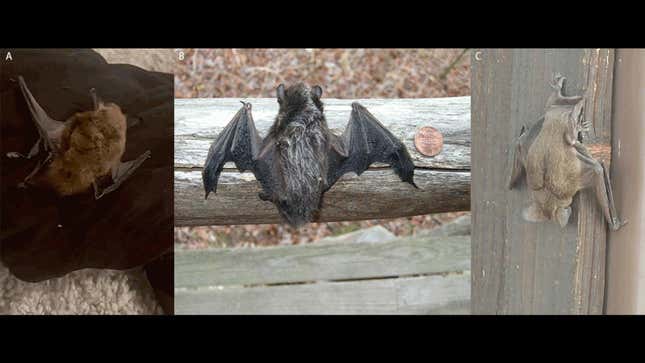
Rabies was unusually deadly in the U.S. last year, new data from the Centers for Disease Control and Prevention has found, with at least five people dying from the viral illness in 2021. Rabies can be transmitted to people from infected animals and is almost always fatal without swift post-exposure treatment.
The CDC told the Associated Press late Thursday night that five cases of rabies had been reported in 2021. Three of the cases were detailed in a new report by CDC scientists and local health officials released Friday. Those three deaths involved people who contracted rabies in August, all from close contact with bats.
In one case, previously covered by Gizmodo, a man in his 80s in Illinois captured the bat that bit him and submitted it for testing, which confirmed the presence of rabies. But he refused the preventive treatment of a rabies vaccine along with donated antibodies. At the time, the man’s reason for refusal was unclear, but the new CDC report says he cited a fear of vaccines. Around a month later, he developed common rabies symptoms like neck pain, paralysis, an altered mental state, and difficulty swallowing, and died soon after. He was the first rabies death reported in the state in almost 70 years.
Another death involved a young boy in Texas, who was hospitalized in November after contact with a bat. In the third case, a man in Idaho did not recognize the need for rabies treatment after an encounter with a bat because he believed he hadn’t been bit or scratched.
Rabies is a frightening viral infection that targets the brain and spinal cord. Depending on the route of exposure, it can take weeks to months before symptoms appear, and during that time, post-exposure prophylaxis can almost always prevent illness and death. Once people start feeling sick, though, very little can be done, and those cases are almost always fatal. Though now rare in many parts of the world, due to animal control and dog vaccination programs, many wild mammals carry the virus, including bats. Only about one to three cases of rabies are reported annually in the U.S. nowadays, and 2021’s total is the highest seen since 2011.
Sadly, one of the deaths involved a man who did get post-exposure treatment but likely didn’t respond to it due to undocumented problems with his immune system, according to the AP. The fifth death involved someone who was bitten by a rabid dog while traveling in the Philippines and who later died in New York.
Contrary to popular belief, bats aren’t prolific carriers of rabies, with only a small percentage believed to have it at any given time (though there is some speculation that bats may not get as sick from rabies as other animals, they can still die from it). But the CDC report authors do note that about 60,000 Americans seek treatment for a possible rabies exposure every year, and that about two-thirds of these exposures likely involve bats.
Though rabies remains a rare problem in the U.S., the report notes some prudent steps can be taken to further cut down the risk. People should be aware that bats can carry rabies and avoid contact with them, the authors say, and if they do come into close contact with a bat, they should try to capture it for testing. People should also get quickly evaluated for treatment following a close bat or wildlife exposure, and should be treated if rabies can’t be ruled out.
Unfortunately, while these treatments are life-saving, they can be prohibitively expensive, costing thousands even with insurance.